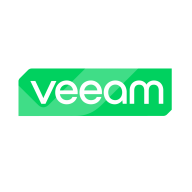


Densify and Veeam Data Platform are key competitors in the IT management sector, each serving unique organizational needs. Densify shines in resource optimization and cost efficiency, while Veeam Data Platform offers robust data protection and recovery features, making it ideal for data-centric operations.
Features: Densify provides advanced resource optimization, predictive analytics for cloud efficiency, and cost reduction strategies. Veeam Data Platform excels with comprehensive data protection, backup, and recovery, ensuring business continuity and resilience. The fundamental distinction is Densify's emphasis on cost management compared to Veeam's focus on extensive data protection capabilities.
Room for Improvement: Densify could improve its data protection capabilities and expand integration options. It may also benefit from enhancing predictive analytics functions. Veeam Data Platform might enhance its cost efficiency, streamline deployment processes, and further develop integration with resource optimization tools.
Ease of Deployment and Customer Service: Densify is known for its seamless cloud-native service integration that causes minimal disruption. Its customer service is often praised for its responsiveness. Veeam Data Platform, while requiring more initial setup, offers robust support structures that underline its flexibility.
Pricing and ROI: Densify is recognized for its cost-effective setup, providing strong ROI through effective resource management. Veeam Data Platform, although potentially involving a higher initial investment, delivers high ROI due to its comprehensive feature set and data protection strength.



IBM Turbonomic offers automation, planning, and right-sizing recommendations to streamline resource management, improve efficiencies, and optimize costs across virtualized environments and cloud platforms.
IBM Turbonomic is valued for its capability to optimize resource allocation and monitor virtual environments efficiently. It facilitates automated decision-making in VM sizing, load balancing, and cost optimization for both on-premises and cloud deployments. Users can leverage insights for workload placement, ensure peak performance assurance, and effectively right-size across VMware and Azure. The ongoing transition to HTML5 aims to improve visual and navigational ease, while expanded reporting features are anticipated. Opportunities for improved training, documentation, and integrations enhance platform usability and functionality.
What Are the Key Features?In finance, IBM Turbonomic aids in maintaining platform efficiency during market fluctuations. Healthcare organizations leverage its capability for resource optimization during high-demand periods to enhance patient care support. Retailers use it for planning in peak seasons, ensuring resources align with fluctuating demand to maintain performance continuity.
Densify is a hybrid cloud and container resource management platform that makes workloads self-aware of their precise resource requirements and automates the resource management and selection process. This solution helps you control your cloud spend and also helps your apps perform and scale better. Densify enables you to match your cloud requirements with the optimal cloud supply. Additionally, Densify is the only technology that leverages patented, predictive machine learning-powered analytics to perform advanced modeling of workload patterns, and provide precise optimization directives. It is ideal for cloud engineers, container platform owners, and IT finance.
Densify works by:
Densify Features
Densify has many valuable key features. Some of the most useful ones include:
Densify Benefits
There are many benefits to implementing Densify. Some of the biggest advantages the solution offers include:
Veeam Data Platform ensures comprehensive data resilience by offering secure backups and intelligent data insights, catering to the complexities of modern data management.
Veeam Data Platform empowers businesses with reliable data protection, orchestrated recovery, and streamlined management. Providing peace of mind, it guarantees data is secure, available, and effortlessly recoverable. Organizations benefit from features such as instant recovery, simplified management, and compatibility with virtual environments. While it shines in backup and restore capabilities, it calls for improvements in integration with physical servers and enhanced cyber security features.
What are the key features of Veeam Data Platform?Organizations in industries like finance, healthcare, and manufacturing utilize Veeam Data Platform for critical data management, ensuring business continuity and disaster recovery. Employed in securing both virtual and physical workloads, Veeam integrates cloud storage for enhanced scalability and efficiency.
We monitor all Virtualization Management Tools reviews to prevent fraudulent reviews and keep review quality high. We do not post reviews by company employees or direct competitors. We validate each review for authenticity via cross-reference with LinkedIn, and personal follow-up with the reviewer when necessary.